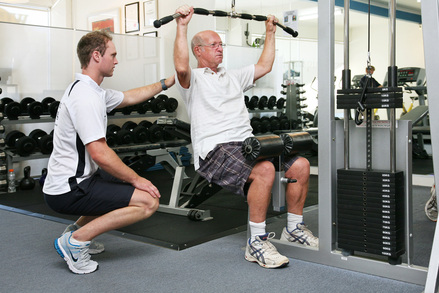|
Many people ask me what the number one reason is for clients who discontinue their training. There are many answers that spring to mind, reasons such as not having enough time, money, or commitment. However, I believe the most avoidable reason is musculoskeletal imbalances or injuries. After working with people to achieve their health and fitness goals for over 5 years, it is clear to me that postural instabilities are a major barrier to continuing exercise in the long term. In most cases, it is a barrier to exercise which is largely avoidable. At Inspire Fitness, our initial screening process includes a thorough documentation of your past and present injuries. We identify weaknesses or imbalances that may exist, and consider how they will affect your movement patterns. From there, we devise a plan to not only help you reach your goals, but to do so in a safe and effective manner given your unique movement patterns. Most clients have health and fitness goals which revolve around losing weight, improving cardiovascular fitness, and increasing strength, all of which are important components when structuring a training program. With that said, we believe it is imperative to guide a client through a program which will enable them to achieve their goals but avoid one of the most common barriers to continuing exercise: injuries. I’m sure we are all aware of training horror stories where an individual has been injured while training with someone who is under-qualified or perhaps in a group exercise scenario. Injuries can quickly trigger a sequence of negative lifestyle changes. For example, a person sustains an injury, which makes basic activities difficult such as walking. More advanced movements like gym-based exercises seem near impossible in the short-term. Then, a decrease in exercise results in loss of fitness and weight gain. This subsequently decreases motivation, and if this continues for a sustained period of time, substantial long-term health issues can arise. THIS IS A COMPLETELY PREVENTABLE SEQUENCE! BUT HOW? Prevention starts with having the guidance of a trained practitioner who has a sound scientific knowledge of the human body, complemented by practical experience, and informed by a thorough screening process. I believe that it is essential to incorporate an element of corrective exercise in every program, and to resist the temptation to compromise your technique just to increase the loads you are using. It is also important to train the muscles to work together rather than in isolation. For example, most people with low back pain note that they feel weak in their abdominal muscles and point to their upper abdominals (rectus abdominis). The rectus abdominis is primarily responsible for flexing the spine or bringing your rib cage forwards toward your hips. However, the solution is NOT to over-strengthen this muscle in isolated movements, such as crunches! Isolation exercises can cause imbalances that will result in a negative postural shift, in this case potentially creating an excessively rounded lumbar spine. So when you are training, remember you are not only training for improved strength, increased fitness, and weight loss, but also to address any postural imbalances or injuries that you have. In doing, so you will avoid your own training horror story, and in the process, you'll achieve training consistency and longevity…the guaranteed path to achieving long-term results. Written by Rory Scott, Accredited Exercise Physiologist.
0 Comments
Your comment will be posted after it is approved.
Leave a Reply. |
exercise physiologist Categories
All
Exercise Physiologist Blog Archives
June 2021
What is an Exercise Physiologist? |
| EXERCISE PHYSIOLOGY SERVICES AT INSPIRE FITNESS FOR WELLBEING |
|
© 2022 Inspire Fitness for Wellbeing
Clinical Exercise Physiology Accredited Exercise Physiologists |

Exercise Physiology | Personal Training | Gym
North Balwyn, Melbourne, Australia Contact Us: (03) 9857 3007 317 Doncaster Rd,North Balwyn VIC 3104 |



 RSS Feed
RSS Feed